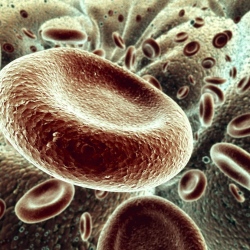
Thin off-white threads of human cellular material spiral around the spindle of a machine that is braiding them into a sturdy rope. It sounds macabre, but the inspiration for the material, made by San Francisco–based Cytograft Tissue Engineering, is health, not horror: the biological strands could be used to weave blood vessel patches and grafts that a patient’s body would readily accept for wound repair. The process is faster and could be more cost-effective than other methods of producing biological tissue replacements.
Much of today’s tissue engineering depends on biodegradable but synthetic scaffolds for cells that will rebuild a piece of organ or tissue. Typically, the scaffolding is eventually destroyed by the body. Cytograft’s woven tissues, however, seem to remain in the body and become populated with cells. "A long time ago we decided we were going to make strong tissues without any scaffolding," says Nicolas L’Heureux, Cytograft’s cofounder and chief scientific officer. "Once you get it in the body, your body doesn’t see it as foreign."
The company developed the "human textile" idea from earlier work using sheets of biological material to reconstruct blood vessels. Basically, researchers grow human skin cells in a culture flask under conditions that encourage the cells to lay down a sheet of what is known as extracellular matrix a structural material produced by animal cells that makes up our connective tissue. Cytograft can harvest these sheets from the culture flasks and then roll them into tubes that become replacement blood vessels. Blood vessels produced in this manner are still being tested—but they have performed well, with no signs of rejection, in a few patients in Europe and South America.
The rolling process, however, is expensive and time-consuming, in part because cells must be used to fuse the tube together so that it is sturdy enough for transplantation. Slicing the sheets into thin ribbons that can be spooled into threads makes it possible to use automated weaving and braiding machines to create three-dimensional structures that do not require fusing.
Cytograft’s technique draws upon a long history of medical textiles, which are typically produced with synthetic fibers like polyester. "Creating textiles is an ancient and powerful technique, and combining it with biomaterials is exciting because it has so much more versatility than the sheet method," says Christopher Breuer, a surgeon, scientist, and tissue engineer at the Yale School of Medicine. "The notion of making blood vessels or more complex shapes like heart valves, or patches for the heart, is much easier to do with fibers," he says. "If you can make fibers of any length, then there is no limit to the size or shape that you can make."
